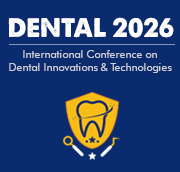Title : Morphology and standardization of gingival needles – microscopic analysis
Abstract:
The success of performing local anesthetic techniques depends on several factors, including the anesthetic technique and the material used, such as the syringe, the anesthetic substance and the needles used. Traditionally, needles can be classified according to their length, which can be categorized into: Extra-long, long, short or extra short. In some countries, there is still no rigorous standardization for this classification and uniformity in the identification of sizes, leading to significant variations between different commercial brands. The aim of this study is to assess whether there is standardization of different commercial brands of gingival needles regarding their length, bevel shape, packaging identification and whether there are deformations in the needle bevel after use through microscopy. This descriptive, temporal, in vitro study used quantitative and qualitative criteria. The experimental analysis used six commercial brands of gingival needles, divided into seven groups, according to the brand and size of their needle. The samples were separated into groups: G1 – Injex® long, G2 – Injex® short, G3 – Dencojet® long, G4 – Septojec® long, G5 – Jets® short, G6 – Procare® long and G7 – Allprime® extra short. For this analysis, we used double verification, blinding the evaluators as to the brands and sizes indicated by the manufacturers. The measurement was performed using a digital pachymeter and the results grouped into tables, comparing whether there were significant differences between the commercial brands. After the measurement tests, the needles were taken under the microscope for morphological and structural evaluation of their bevel using needles without any use. Needles had single, double or triple bevels. After the initial microscopic analysis, 5 perpendicular perforations were performed in synthetic skin, simulating the use of the needle in multiple anesthesia, as it happens in clinical practice. The used needles were taken again for inspection under the microscope, observing whether there was bending or damage to the bevel. We conclude that all tested marks underwent morphological changes and deformations regardless of the shape of the bevel. We also verified that there is no uniformity in the sizes and identification of the tested needles, which could hinder the precision of the anesthetic technique and cause more pain or discomfort to the patient.



